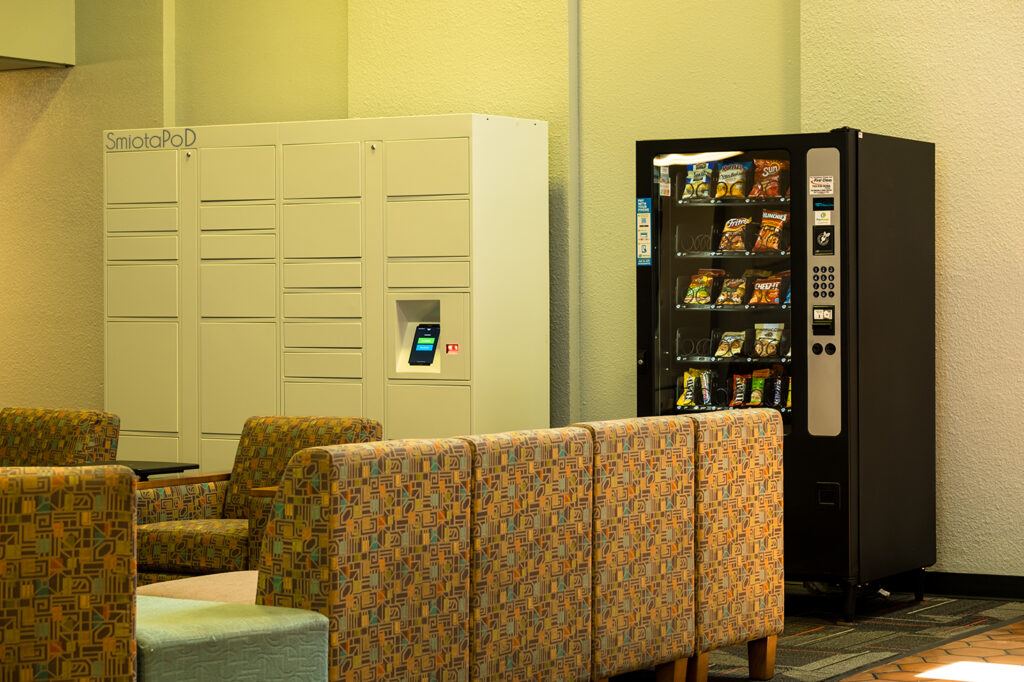The future is here – and smart technology continues to mold and shape our habits and societies. Smart lockers are one such example. There are exciting ways these systems upgrades are impacting industries for a variety of reasons. To zero in on one aspect, we’re going to look at interesting cases utilizing temperature-controlled lockers.
Student Food Insecurity
Here’s an example that people may not expect. However, it’s creating ripples in the student activism circles and beyond. We’re talking about temperature-controlled lockers to fight student food insecurity. Students are using smart lockers on campus to redistribute food on campuses. It’s a clever and effective way to combat an urgent need.
And much of the broader society doesn’t realize just how urgent this situation is. While talk of student debt is often in the headlines, many don’t realize the implications of what tuition costs demand of students during their time in the classroom as well. According to a 2017 study, Among students surveyed, 15% were food insecure; an additional 16% were at risk of food insecurity. This is “an important public health concern that might have implications for academic performance, retention, and graduation rates.”
Unfortunately, it’s a societal failure that ripples all through the ages. Childhood hunger and poverty are rampant. In the state of Maryland, for example, from 2007 to 2015, the “number of public school students eligible for free and reduced-price meals increased by 39%, with more than 45% of the student population now below the income threshold necessary to receive a free or reduced-price meal at school.” In a country that has the prowess to invent, install, and utilize smart technology, there is really no excuse for any child to go hungry due to a lack of access to resources.
Our laws need to change urgently as do our aptitudes for compassion. Unfortunately, our current political process is not always able to meet urgent needs with speed and efficiency. Smart lockers can support community members in mutual aid and resource redistribution to cover those gaps. Our neighbors are the ones who organize support when institutions fail. Smart tech can help.
Co-Working Spaces
Co-working spaces are growing in popularity – even more so now in the wake of the great “work-from-home” move of the last couple of years. More workers than ever prefer to work in their own space on their own schedule. Self-started businesses and side-hustles are the norm. Businesses are re-thinking their brick-and-mortar practices and permanently shifting to remote staff. With all of these trends, co-working spaces are in high demand and on the rise.
And all of this presents an interesting use case for temperature-controlled lockers. Every co-working space is different and presents unique needs. They’re sure to continue to grow in popularity as people move away from working in a company office setting, but still require the amenities of an office environment. Some people will use smart lockers to store their lunch while they make use of the quiet common space. It’s possible that team members may need to safely and securely hand off materials. Members of a co-working space will need a temperature-controlled space where their deliveries arrive.
Healthcare
Practices like telehealth and remote health care are also on the rise. And in the pandemic, we watched as our health care system strained under the weight of too much demand and not enough support. Most can agree that upgrades in efficiency that improve the working conditions of providers while better meeting the needs of patients is a big plus. Smart lockers can do just that.
In the case of pharmacies, smart lockers reduced the wait time for recipients to mere minutes and improved their privacy while doing so. Additionally, smart lockers can be used for hospital staff to better maintain important exchanges of information and gear. Smart lockers can be a major improvement for care facilities with long-term residents receiving packages, prescriptions, or even food.
Even in the case of holistic and traditional medicine practices, smart lockers have a role to play. For example, in partnership with allopathic medicine, we can use plants, physical therapy, and mental health care in preventative ways to create a smarter, healthier future. What if, in the same community hub, people could use smart lockers to access their prescriptions, weights and braces, and even an herbal tea that supports sleep? In other words, these are the dreams that we can build into a smarter future, powered by the creativity of humans combined with the possibilities of technology.
Conclusion
The ways we learn, work, and take care of one another are incredibly important. It all combines to impact the quality of our lives. While something like temperature-controlled lockers may seem small, in looking at these examples it’s easy to see what an impact efficient and effective smart technology can truly be. Ultimately, it’s an exciting time to imagine what’s possible and to tackle issues that have plagued our societies for far too long. We can move forward into a smarter future.





